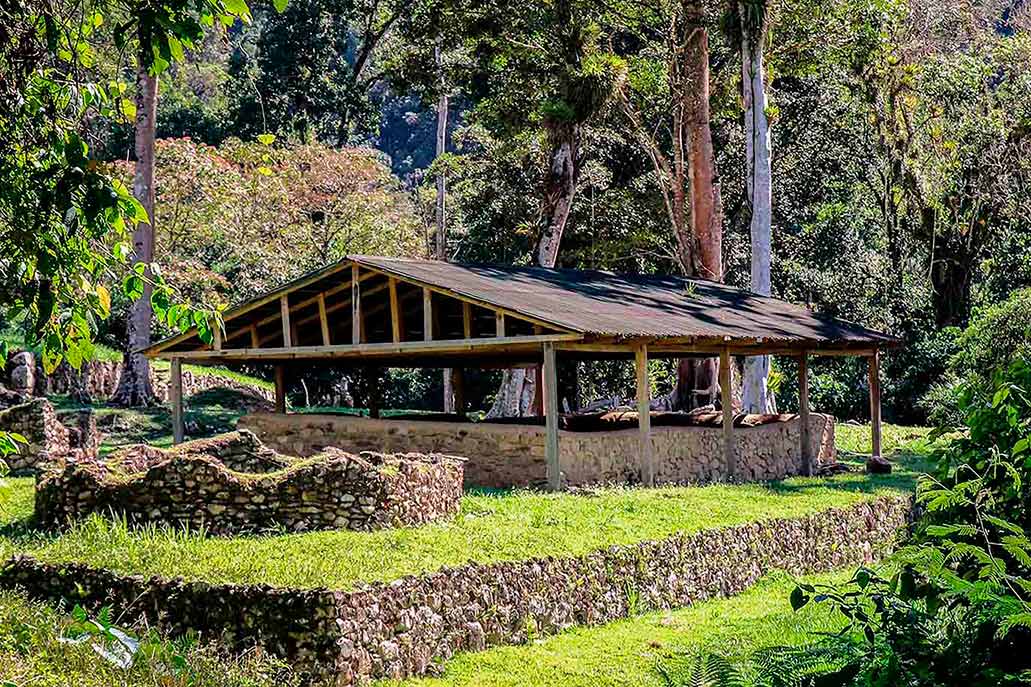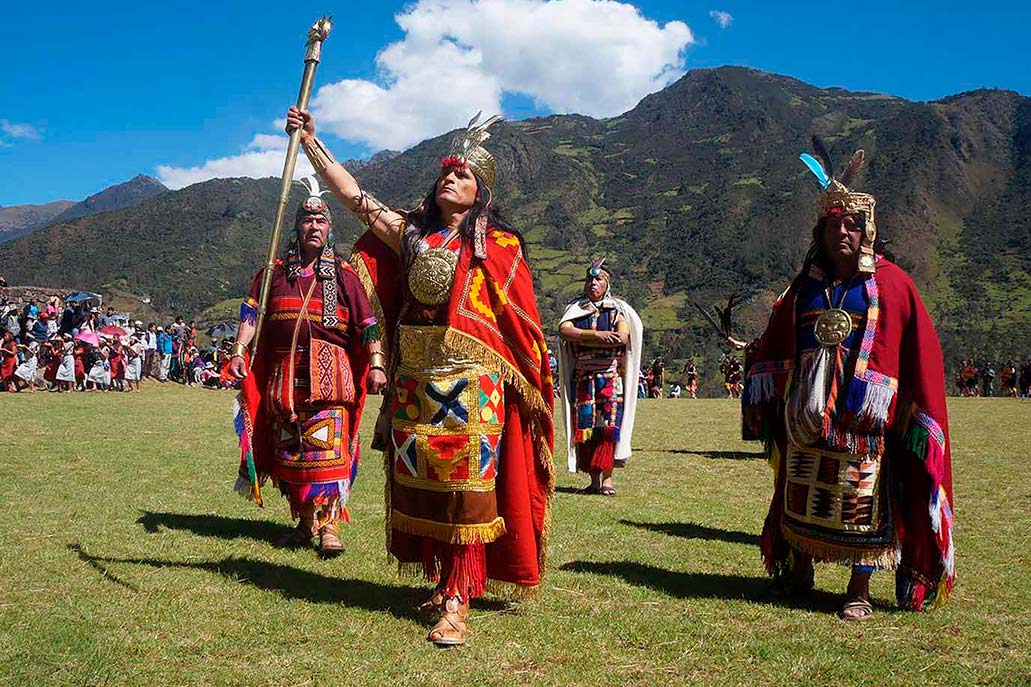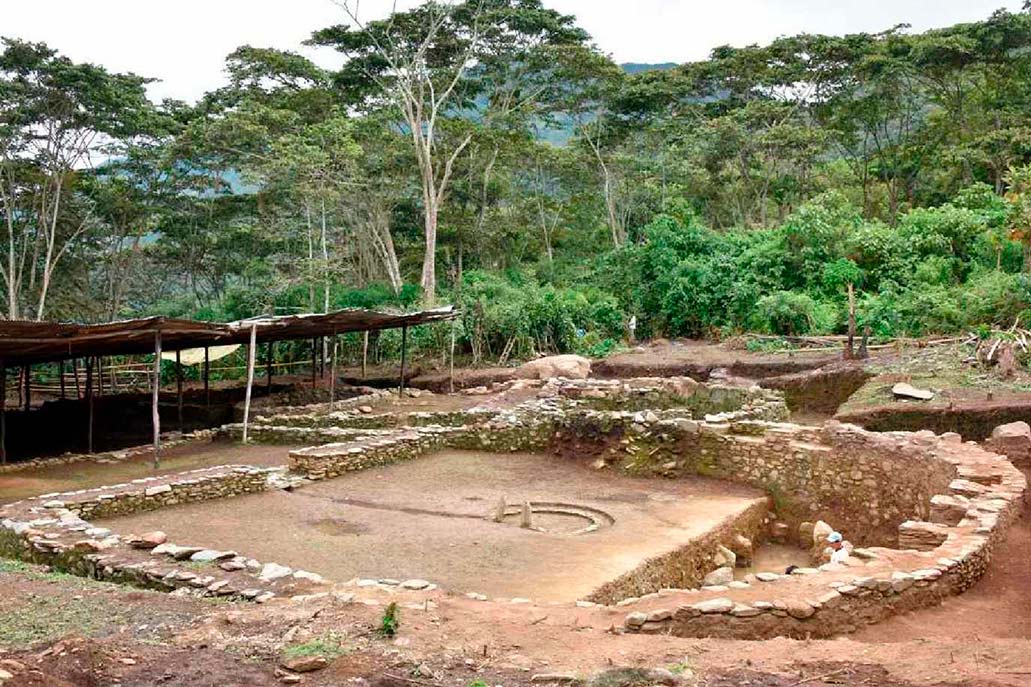Espíritu Pampa or Vilcabamba la Grande refuge and Inca resistance
Espíritu Pampa is an archaeological site located in Cusco, precisely in the jungle area of this region. It belongs to the province of La Convención and the district of Vilcabamba. All this enclosure brought many complications about its origin. As studies were carried out, archaeologists realized that the architectural style not only belongs to the Incas but also to the Huari culture. This discovery was important to understand more about the influence and possible origin of the Incas.
Content
History of Espíritu Pampa or Vilcabamba la Grande
Before discovering this place, some records linked it to Vitcos or Machu Picchu. To date there is not much clarity about this data, some link Choquequirao to Vilcabamba la Grande since the records establish that the path to this place is complicated and that horses or mules cannot follow the muddy path. This contrasts with the current Vilcabamba or Espíritu Pampa, which has much easier access. This discovery was made by Hiram Bingham in 1911, but he did not study the area in depth.
Vilcabamba can be translated as “Plain of the Spirits”, this can also be understood as “Sacred place”, probably the fact that it served as the last refuge of the Incas, where the resistance against the Spanish advance was developed. However, according to some records and excavations, it can be established that a possible beginning of this entire place is due to the presence of the Huari culture. Leaving the possibility that the Incas had a great influence on this culture.
During excavations in 2011 in Espiritu Pampa, the funerary remains of the Lord of Huari de Vilcabamba were found. This finding has a similar importance to what was found in Lambayeque, referring to the Lord of Sipan. This finding suggests that the Huari culture managed to spread to the jungle.
This last finding is important because it can represent a link to a better understanding of the history of Tawantinsuyo. Until now it is known that Vilcabamba was the place where the last Inca resistance took refuge. The Incas of Vilcabamba after losing the battle in Ollantaytambo against the alliance of some curcas with the Spanish. The Incas of Vilcabamba managed to resist the battles for almost 40 years, from Manco Inca to Túpac Amarú I. Unfortunately, after the capture of the last Inca, a large part of the site was burned and later abandoned. With time, Vilcabamba was covered by vegetation and almost forgotten, until the meeting held by Hiram Bingham in 1911; however, the studies were carried out only in this century and in the last decades of the last century.
An important fact is that at the end of the 19th century, several expeditions set out in search of what many believed to be the lost city of the Incas. The records of this unexpected city coincide more with the archaeological site of Choquequirao. However, nothing seems to satisfy the theories of specialists about what this lost city of the Incas should be like. Some records indicate that the lost city would be the place where the Manco Inca and his descendants formalized their resistance, if this were the case, the lost city of the Incas would be Espiritu Pampa. As can be found in the remains of Vilcabamba la Grande which represents the Inca resistance zone and also that the Incas used an existing settlement to improve it and use their architecture. Since the archaeological remains indicate this.
The architecture of Espiritu Pampa or Vilcabamba.
The archaeological site of Espíritu Pampa or Vilcabamba la Grande has a large area. Among the buildings that can be seen today, you can find buildings with the Inca architectural style. These ruins are located 80 kilometers from Machu Picchu, also located among the dense vegetation of the Cusco jungle. Other walls are simpler, something important is that you can find great evidence of Huari constructions.
Among the constructions, the large stones characteristic of Inca architecture stand out. You can also find other walls with smaller stones joined with mud. Little by little, more enclosures were found. At 600 meters from this archaeological zone, you can find a small enclosure. It is also possible to find the remains of a temple with 24 doors and 69 meters long, this entire enclosure is surrounded by a possible palace that has a span of 100 meters long. Near the central square, you can find a building that is considered the house of Titu Cusi Yupanqui.
All the constructions were built on terraces or platforms, something that is also characteristic of Inca urbanization. The platforms fulfilled the function of being elevations that allow them to resist possible floods or accumulation of water. Remember that the platforms also have a function to filter the water that can accumulate. Another important construction is that there is a temple where sacred figures were deposited, it is known as “La Casa de los Nichos” or “House of the gods” and it is 43 meters long with double jamb niches. In this sector, you can appreciate the finely carved stones and trapezoidal shapes.
Places you will see on the way to Vilcabamba
- The Sacred Huaca
Along the way, we will find main access and further on a huge stone carved with possible allegories to the divinities of the Andean worldview. It is located at a fundamental point very close to the central square and the ushers where the rituals and ceremonies were performed. There is knowledge and records that settlers worshiped it until the sixties of the last century. - Archaeological remains
In Espíritu Pampa or Vilcabamba, in some cases, the archaeological remains found to date are shown, and the vast majority of these residues are stored waiting to be analyzed. It can be found that they burned a large part of this enclosure, since fossilized burned corn can be found, other artifacts such as ceramics and ceremonial articles are said to be in the same condition. The most important finds to date are the Royal Tombs of Señor de Espíritu Pampa or Señor de Huari. Another incredible object is the ceramic where the resistance of the Incas of Vilcabamba against the Spanish is narrated through graphics. Currently, you can find a site museum. - Milkmilk trees
These large trees reach 30 meters in height, bordering a large part of the enclosure. It is also possible to find them in the Main Square. These trees are more than 400 years old and probably saw the heyday of this enclosure that functioned as a place of resistance. - Itma colla, Yana Orco, Tucuyricuy
Another space that can be seen is the Apus or Sacred Mountains that surround the entire sector of Espíritu Pampa. These mountains continue to be revered and command respect and admiration. Since the heyday of the Incas and probably long before, mountains are considered deities, especially those that stand out most in the entire landscape. These three mountains surround three flanks of Espiritu Pampa.
How to get to Vilcabamba or Espiritu Pampa?
There are several ways to get there, but we will always recommend that you do so by purchasing a tour package. These packages have itineraries that include several days of trekking, which can connect Espíritu Pampa, Choquequirao, Vitcos, and Machu Picchu. Another way is to do it by following a long journey through the Valley of the Convention on your own.
The first section is to travel to Ollantaytambo, then follow the route through the Abra Málaga and descend through the Cusco jungle until reaching the province of La Convención, specifically the Kiteni district, then we continue the trip along a trail road to Yuveni and Chontabamba, from where you have to start the route on foot for more than an hour. From this point, we can see the three Apus that surround the archaeological site.
By Machupicchu Terra – Last updated, August 28, 2023


